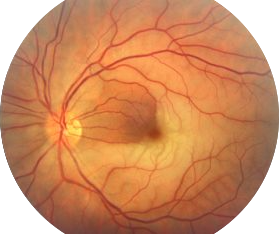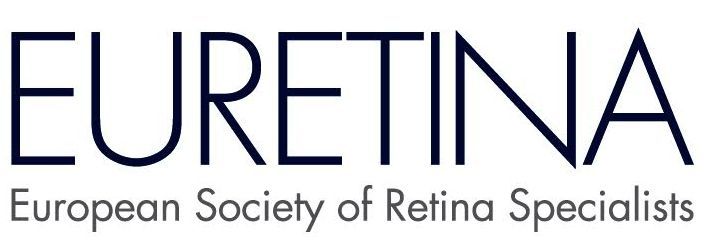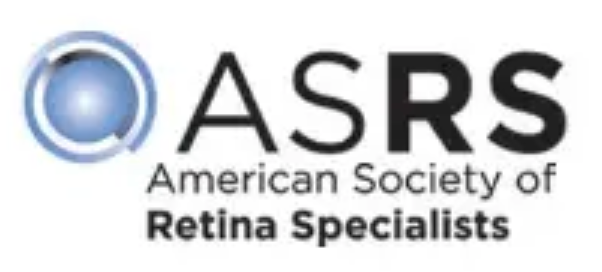Retinal Vein & Artery Occlusion
What is Retinal Vein & Artery Occlusion?
Retinal vein and artery occlusion are medical conditions that involve the blockage of blood vessels in the eye's retina. The retina is a light-sensitive tissue located at the back of the eye that plays a crucial role in vision. Both retinal vein occlusion (RVO) and retinal artery occlusion (RAO) can significantly impact vision and overall eye health.

Retinal Vein Occlusion (RVO)
Retinal vein occlusion occurs when a vein that carries blood away from the retina becomes blocked or narrowed, typically due to a blood clot. This blockage can lead to a buildup of pressure and fluid in the affected area of the retina, potentially causing vision loss or other visual disturbances. RVO can be categorised into central retinal vein occlusion (CRVO) and branch retinal vein occlusion (BRVO), depending on the size of the affected vein.
Retinal Artery Occlusion (RAO)
Retinal artery occlusion occurs when an artery that supplies blood to the retina becomes blocked, usually due to a blood clot or embolism. This blockage can lead to a lack of oxygen and nutrients reaching the retina, resulting in sudden and severe vision loss. There are different types of retinal artery occlusion, such as central retinal artery occlusion (CRAO) and branch retinal artery occlusion (BRAO), based on the location of the blockage.
Risk Factors for RVO & RAO
Individuals at risk for retinal vein and artery occlusion include those with:
- Hypertension (high blood pressure): Elevated blood pressure can increase the risk of vessel damage and blood clot formation.
- Diabetes: Diabetes can damage blood vessels, making them more prone to blockages.
- Hypercholesterolemia: High cholesterol levels can contribute to forming plaques in blood vessels, potentially leading to occlusion.
- Cardiovascular diseases: Conditions like atherosclerosis and heart disease can increase the risk of vessel occlusion.
- Smoking: Smoking is a known risk factor for vascular diseases, including those affecting the eye.
- History of blood clotting disorders: Conditions that promote blood clot formation can increase the likelihood of vessel occlusion.
- Advanced age: The risk of these conditions tends to increase with age.
Causes of RVO
Retinal vein occlusion is typically caused by the blockage or narrowing of a retinal vein, which can lead to the buildup of pressure and fluid in the affected area of the retina. The main causes of RVO include:
- Blood Clots: Blood clots can form in the retina's blood vessels, blocking blood flow.
- Arteriosclerosis: The hardening and narrowing of the arteries can compress adjacent veins, contributing to their occlusion.
- Diabetes: Individuals with diabetes are at a higher risk of developing retinal vascular problems due to damage to blood vessels.
- Hypertension: High blood pressure can damage blood vessel walls, making them more susceptible to clot formation.
- Glaucoma: Increased pressure within the eye can affect the blood flow in retinal vessels.
- Inflammation: Inflammatory conditions affecting blood vessels can contribute to their occlusion.
- Blood Disorders: Certain blood disorders that promote clotting can increase the risk of RVO.
- Medications: Some medications or treatments may increase the risk of blood clot formation.
Causes of RAO
Retinal artery occlusion occurs when a retinal artery is blocked, leading to a lack of oxygen and nutrients reaching the retina. The main causes of RAO include:
- Embolism: A blood clot or other debris (embolus) can travel from elsewhere in the body and block a retinal artery.
- Atherosclerosis: Plaques of cholesterol and other substances can narrow or block retinal arteries.
- Heart Conditions: Certain heart conditions can lead to the formation of emboli that can block retinal arteries.
- Giant Cell Arteritis: This inflammatory condition affects arteries, including those in the eye.
- Blood Disorders: Conditions that promote clotting or other abnormalities in blood can increase the risk of RAO.
Symptoms of RVO
- Blurred or Distorted Vision: The central or peripheral vision can become blurred or distorted.
- Visual Field Defects: Loss of peripheral or central vision in one eye or a specific visual field area.
- Floaters: Spots or specks that seem to float in the visual field.
- Decreased Visual Acuity: Reduced ability to see fine details and sharpness.
Symptoms of RAO
- Sudden Vision Loss: A sudden vision loss in one eye, often described as a curtain-like shadow descending over the visual field.
- Blind Spot: A central or peripheral blind spot in the affected eye.
- Visual Disturbances: Visual disturbances such as flashing lights or shimmering.
- Eye Pain: Some individuals may experience eye pain, especially if there's an underlying inflammatory condition like giant cell arteritis.
Treatment of Retinal Vein and Artery Occlusion
- Retinal Vein Occlusion (RVO):
- Managing underlying health conditions: Controlling hypertension, diabetes, and other vascular risk factors can help prevent further damage.
- Anti-VEGF injections can reduce macular oedema (retina swelling) and improve visual acuity.
- Laser therapy may reduce abnormal blood vessel growth and manage oedema.
- Retinal Artery Occlusion (RAO):
- Ocular massage: In some cases of CRAO, gentle eye massage may help dislodge the embolus and restore blood flow.
- Hyperbaric oxygen therapy: Breathing pure oxygen in a pressurised chamber can increase oxygen delivery to the retina.
- Antiplatelet or anticoagulant medications: These medications may be used to prevent clot formation and improve blood flow.
- Thrombolytic therapy: Certain medications to dissolve blood clots may be used.
- Surgical interventions: In some severe cases, surgical procedures might be considered to restore blood flow.





